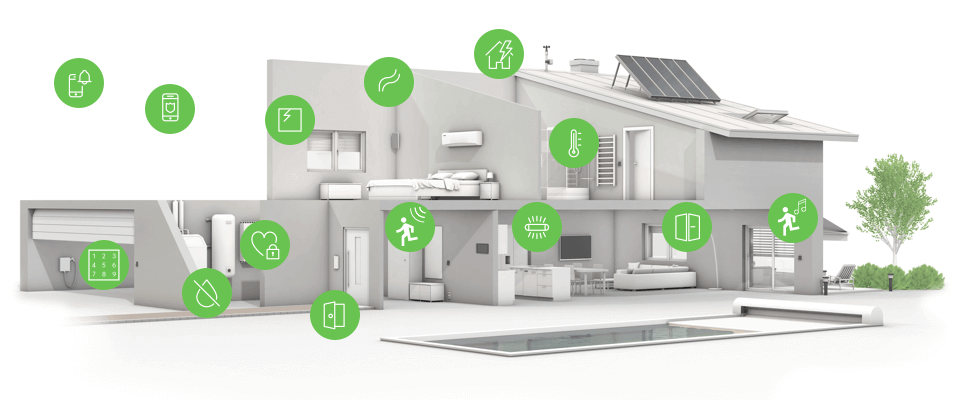
Ask an Expert: Q&A with Abby Schwartz
Looking for a fresh take on home design? Read about the thoughts of Abby Schwartz, founder of Abby Schwartz Associates in Berwyn, PA.
We recently introduced Loxone Smart Home technology to Abby and opened a whole new world of possibilities. As an experienced professional focusing on residential additions and renovations, she works with clients on their future homes, ensuring seamless home design that fits their lifestyle from start to finish. From this, she shares some thoughts and tips with us:

Q: When building a new home, during which phase is best for planning a smart home solution and why?
A: In a perfect world we would introduce the idea at the beginning. Sooner is definitely better because of cost. You’ll know the numbers and benefits from the start. Especially with design decisions, like French doors, for example, having to make sure they’re locked or the way lights are situated. But also, specific decisions can still take place during construction phase.
Q: What common mistakes do you see in home designs when the future homeowner doesn’t involve an architect in the planning stages?
A: People can lose out on a million things. I see people planning and not looking ahead and, without a doubt, overarching. For example, the furniture doesn’t fit. Without an architect, the project won’t be as thought through. People get a solution that may work but its not the best solution. The homeowner won’t always know what options exist because the architect is the one who knows the smart home, materials and options and presents them with the homeowner’s best interests. A contractor isn’t always familiar with this. The home needs comprehensive planning from an architect who’s really in it for the client.
Q: What are your thoughts on planning lighting design in the home?
A: We always do lighting for clients with all types of budgets, so that’s a major factor. With any budget, we need to think about special lighting areas for reading, working, or for artwork. I try to explain that if you don’t have lighting design, you’re going to get a room that’s lit, but the best way is to have a combination of different types of lighting like ambient and task. This way it will be an optimally functioning room. Just as important, is switching. We literally go through every single switch, the circuitry, seeing what connects to what and how to easily go on through the home. Now, whether or not you’ll have smart system is critical.
“…if you don’t have lighting design, you’re going to get a room that’s lit, but the best way is to have a combination of different types of lighting like ambient and task.”
Q: What values shape your business and how does technology play a role in this?
A: For me, smart design is number one. Which doesn’t have to mean smart home, but design that is very thoughtful. An optimal decision will involve design that is customized for that client and his or her lifestyle. So my values become whatever the client’s values are. Budget is huge. If it’s a low budget then that’s my priority. But I also have to think about if the client’s most important thing is comfort, then that becomes my priority. If they want solar panels, then sensitivity to being green and saving energy becomes my priority. Every detail and inch matter and it reflects the client from a cultural point of view. Today’s high-tech world affects decisions differently: Do I need cable? Power for TV? Computers? Where are kids doing homework? Now you have to bring it all to the table early, especially with a tech-savvy client. An understanding of the client’s personality, what they do for a living and their sophistication level really plays into what you do.
Here’s a perfect example: One time I had a tech-savvy gadget guy who wanted his house to have two story walls made of glass – a real modernist husband – but his wife did not want any part of this. This is where culture comes in because she was from the Philippines and used to privacy, which conflicted with the husband’s point of view. She was going to cover the curtains or eliminate them. So the solution was: we can have an option to make the glass fog up, meshing cultural viewpoints. With the ability to press a button, in just a minute the glass will fog up.
Q: How does technology influence architecture and design?
A: About 20 years ago, people would never want a glass door because they thought it would be easier for people to break in. Well, your windows are glass aren’t they? But now we have security systems that changes all of that. We can be driving down the street on our way home and instantly make the home’s lights turn on. There’s so much more flexibility now. This is why I was so impressed to see the show room’s relationship between lighting and design. It all makes sense.
“We can be driving down the street on our way home and instantly make the home’s lights turn on. There’s so much more flexibility now.”
Q: If you could build a smart home for any TV character or cartoon who would it be and why?
A: Monk, a really quirky, brilliant detective would be perfect for a smart home. He would show up at a crime scene and figure it all out. He would be so much fun to design a smart home for because he would be able to – as a gadget guy have every bell and whistle – use this technology as clues to solve cases in shows.

Get In Touch
Send us a request for your next project as a professional installer or a home or business owner.
